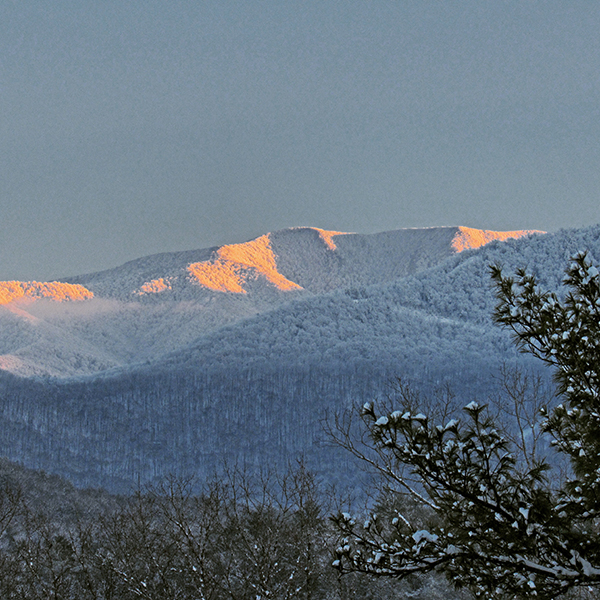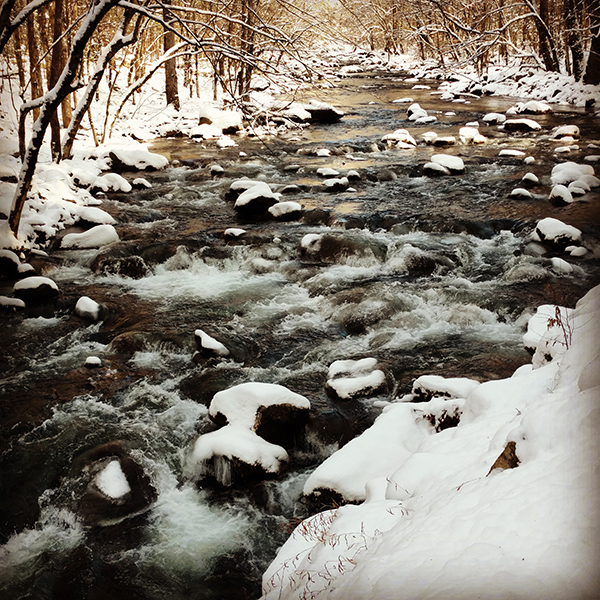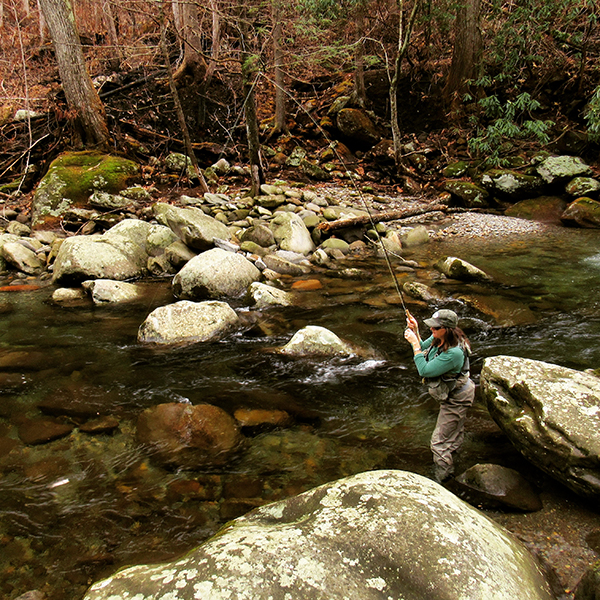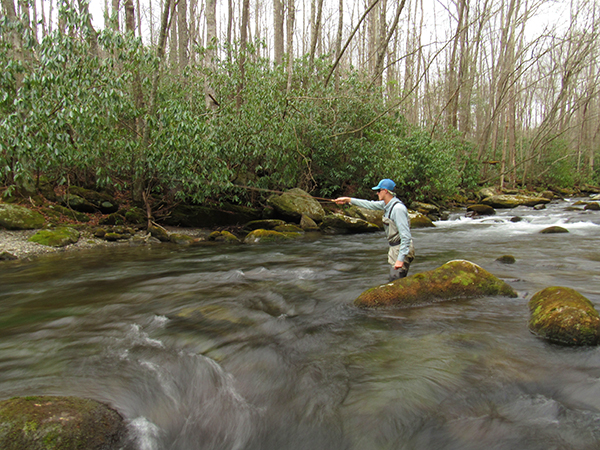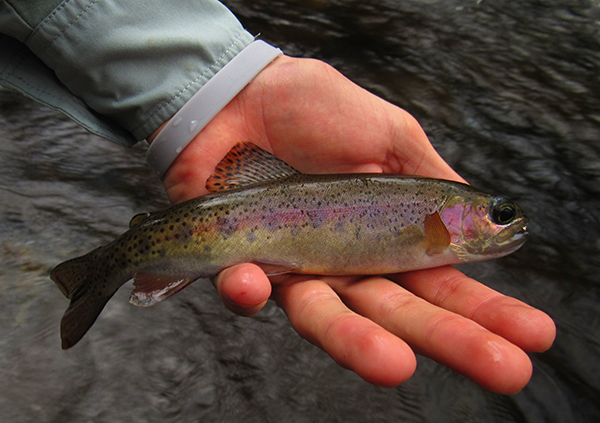It was a strange autumn and it’s been a strange winter as well. Water levels were at historic lows in the Smokies and through the month of November we experienced a string of wildfires. The one most people know about turned out to be one of the largest in the history of Tennessee and devastated Gatlinburg and the surrounding area. The fires that started in the park were swept by unusually high winds over 80 mph into residential areas around Gatlinburg. Fortunately Gatlinburg is rebuilding and the drought seems to be broken.
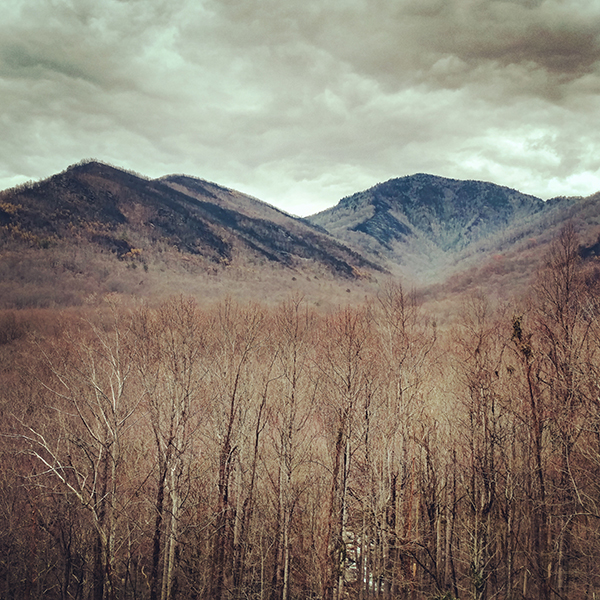
The view from Campbell Overlook on Newfound Gap Road. Bullhead is on the left and Mount Leconte up the middle. You can just make out some white water on the West Prong of the Little Pigeon River at the bottom center of the photo.
Even after our weather pattern took a wet turn it’s taken a while for things to return to normal, but it looks like we’re getting there. Just this week we’ve seen our first “above average” stream flows in the Smokies in many months. Winter and spring are a period of high water and flows remained well below average even as flows improved. It’s nice to see high water for a change!
We’ve seen a bit of snow and some brutally cold weather with daytime highs barely in the 20’s, but that was an incredibly brief shot of winter. This year has been recognized for its extremely mild weather. At this point in January the majority of days have been over 60 degrees, and that’s with several days of extreme cold thrown in! While the mild weather has been nice, we still enjoy the incredible scenery that comes with the winter weather.
Fishing was extremely difficult this fall because of the low stream flows, but fortunately water temperatures remained in good shape. After a tough end to our guide season coupled with the emotional distress of seeing the park on fire we took some time off from fishing. Not being outdoors, just fishing. It’s difficult to explain, but we love our water and trout so much it was tough to bear so we turned our attention to other activities for several weeks. We’ve started fishing again with the unseasonably warm weather and are happy to say the wild trout in the park seem to be in great shape.
Only 2% of the national parks more than 500,000 acres burned and there were essentially just sections of three streams that were burned. A few miles of the West Prong of the Little Pigeon River, Leconte Creek and Baskins Creek had fire damage. There is also a short stretch of mild damage on Road Prong, but not nearly so much as the other places.
Of those streams Leconte Creek is best known for a brook trout restoration some years back. It’s a great stream, but a small one that wasn’t fished my too many anglers. The West Prong of the Little Pigeon ranks among our favorite streams and we were more than a little distressed as we drove through a blackened forest on the way to the stream. Our minds were eased a little bit walking down the path to the water from the road as there didn’t seem to be any catastrophic damage to live trees. Bark is charred at the base of the trees, but very little is burned beyond leaf litter. We were actually surprised how much dead wood on the ground remained.
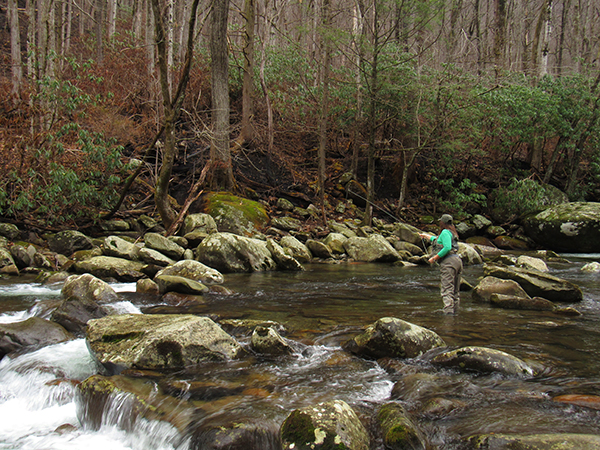
Charity fishes a burned section of the West Prong of the Little Pigeon inside the park. You can see the ground is black but most of the vegetation is unharmed.
Fire damage along the banks is visible but minimal. We’ve fished the stream and are happy to report the fish are still there and eat flies. And just as always, there are some fish there that won’t eat your flies!
The bulk of the serious fire damage in the park seems to be along the highest ridge lines where the fires burned. The further down the slopes you go, the less damage the fires did. We’ve spoken with the fisheries biologists in the park and they’ve set up remote water monitoring stations to constantly check for changes in pH and water clarity. Mud slides have been a concern, but so far nothing out of the ordinary has happened, and we’re starting to breath again.
Over the past couple of weeks we’ve been on quite a bit of water on the Tennessee side of the park. Little River has fished quite well along with the Middle Prong and Abrams Creek. Nymphs have been the consistent way to hook fish, but with the warm weather we’ve experimented with dry and dropper rigs quite a bit. Depending on the day we say as much as half of the strikes coming on the dry flies. Water levels have gotten pretty high over the past few days, though, and along with a cool down to more typical winter weather we don’t anticipate dry flies will do nearly so well as nymphs for the next few weeks.
